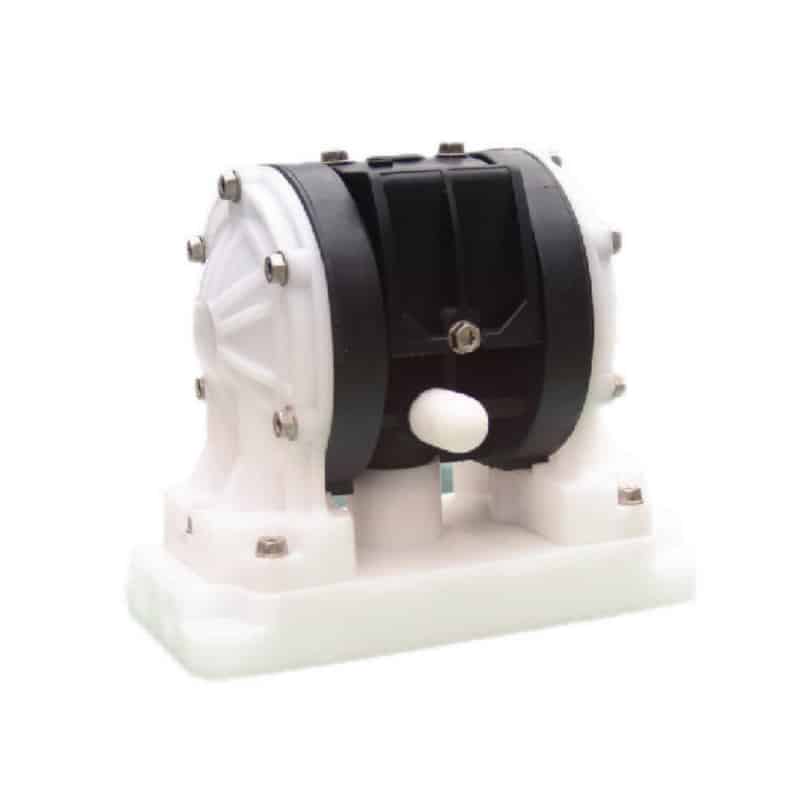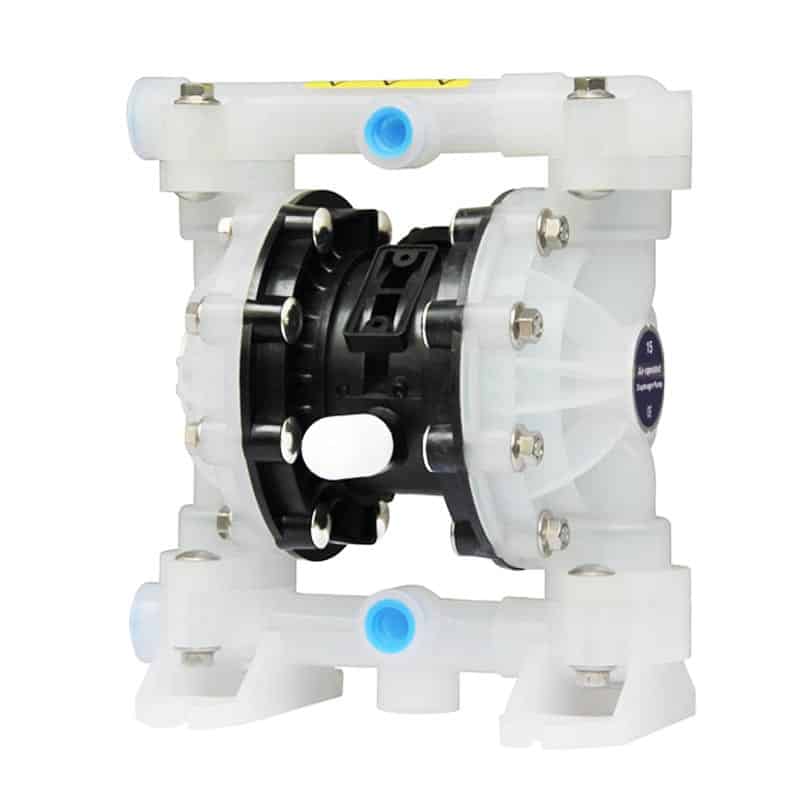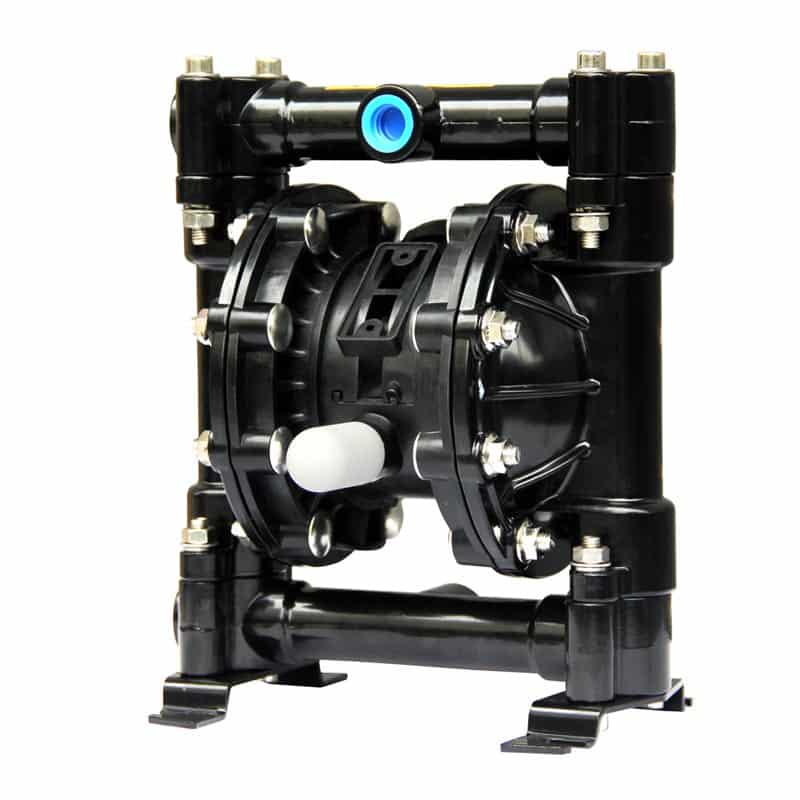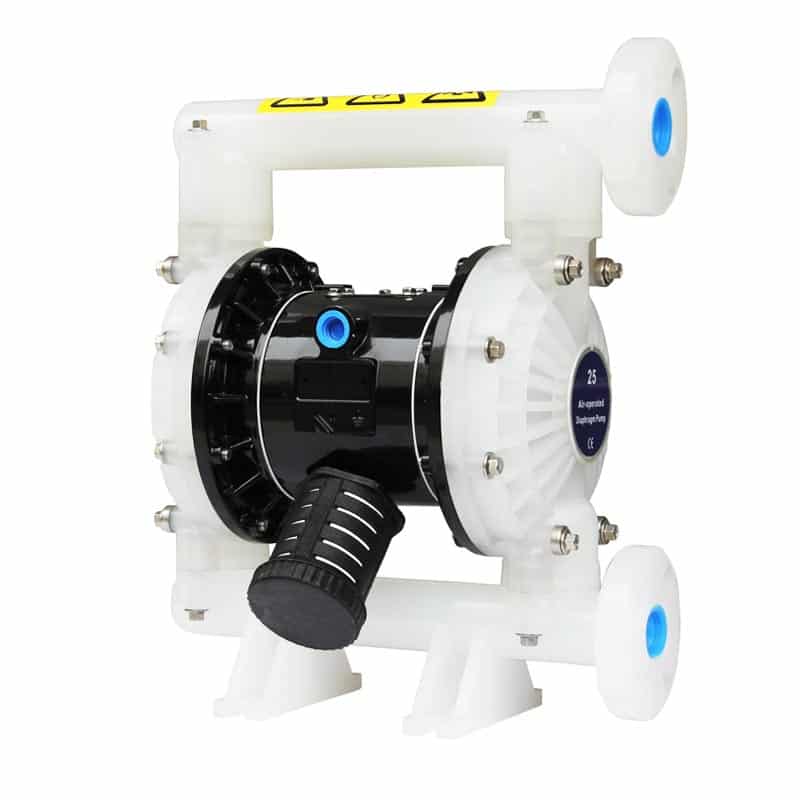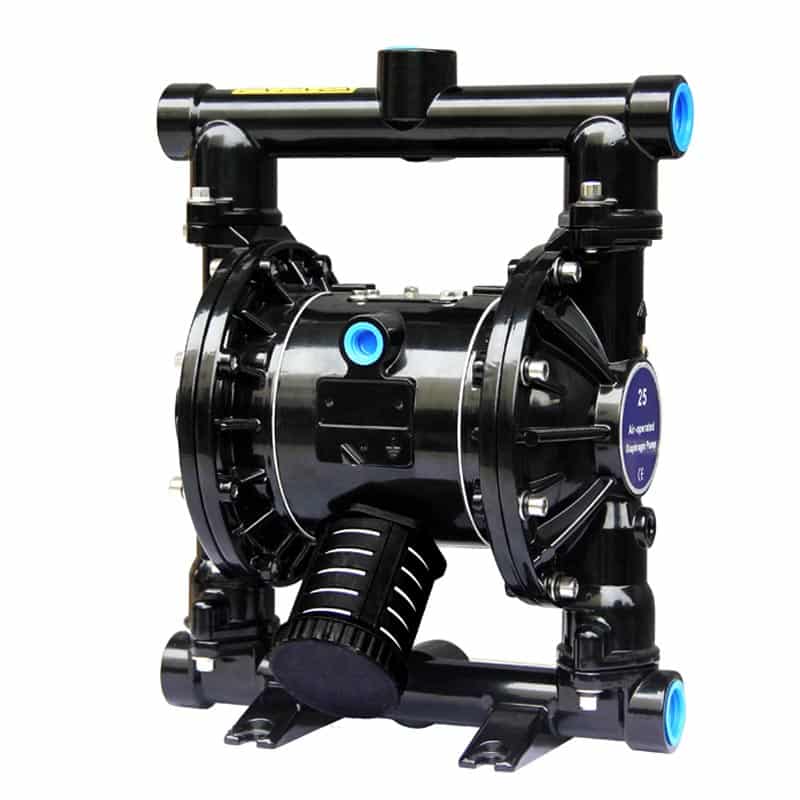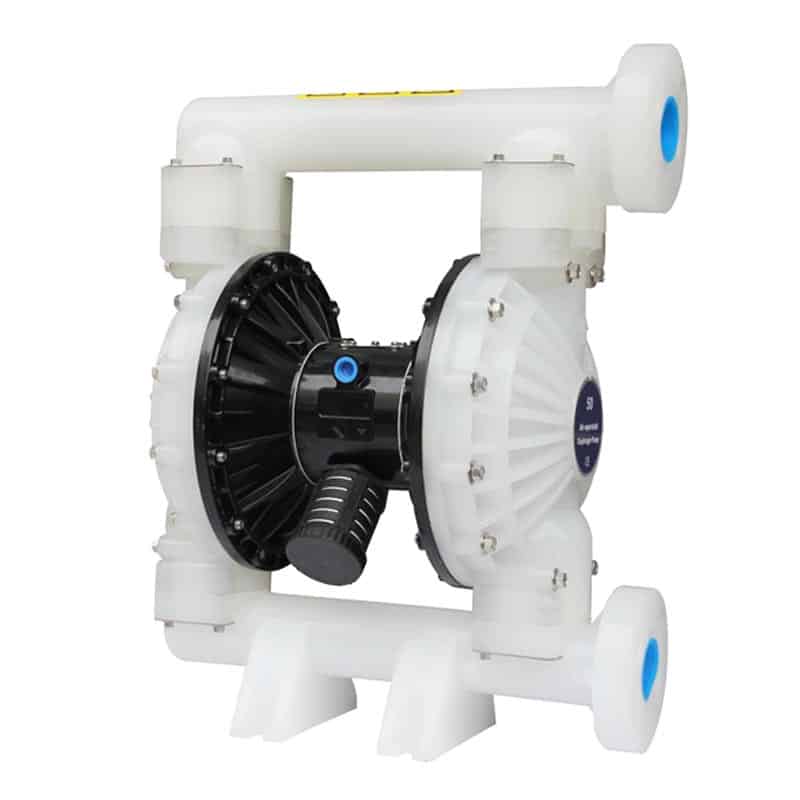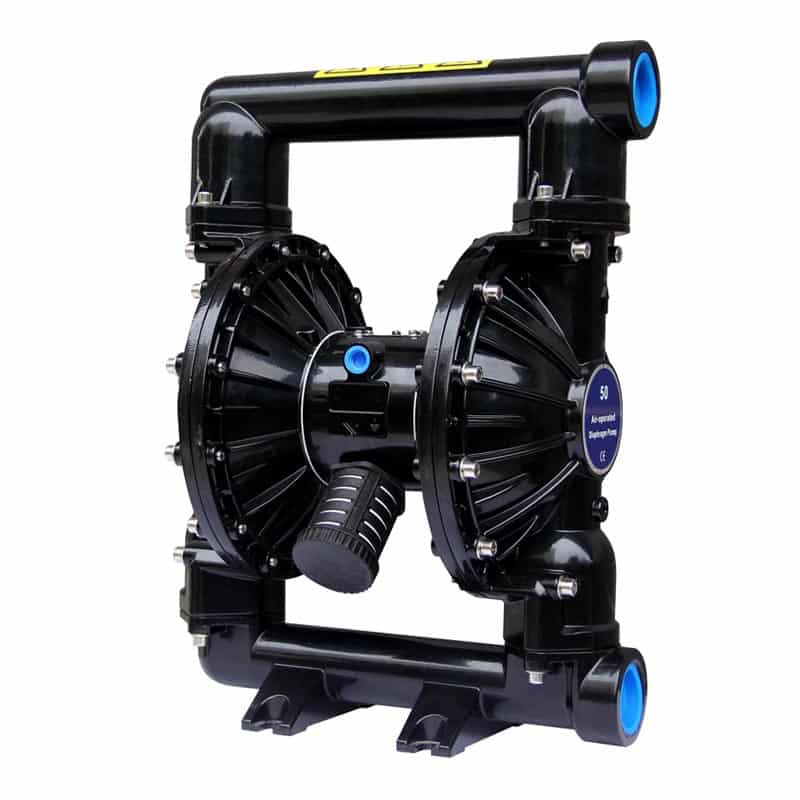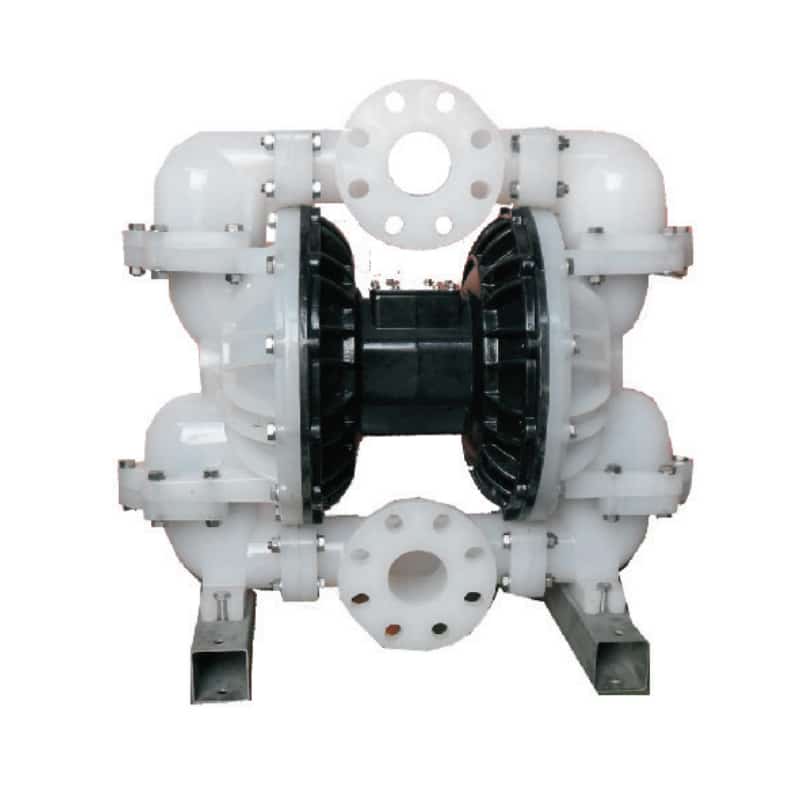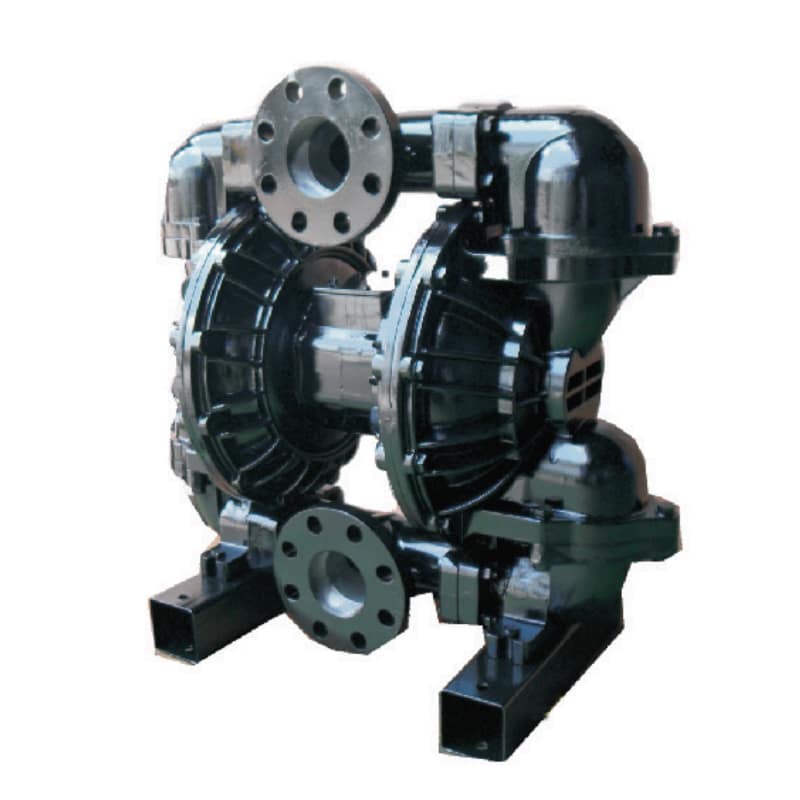AOBL air-operated double diaphragm pumps (AODD pumps) are designed for fluid transfer in a variety of applications. Our diaphragm pumps reliably convey a wide range of fluids, viscous media, corrosive fluids and solids. AOBL offers diaphragm pumps in different materials (metallic, non-metallic) and drive principles (electric, pneumatic) to meet the needs of your application.
AOBL pumps are not only the most cost effective, reliable and energy efficient solution, but our advanced air distribution system dramatically increases pump productivity by reducing air consumption and maintenance of most energy. The ideal solution for increasing your productivity, reducing energy consumption, reducing air consumption and simplifying maintenance.
As one of the leading manufacturers of pneumatic diaphragm pumps, we offer a full line of AODD pumps in a variety of sizes and flow rates to meet the versatility and flexibility you need to make pumping simple.
Air Diaphragm Pumps Tailored to Your Application
AOBL diaphragm pumps are available in a wide range of flow rates and sizes, allowing you to vary the flow outlet and discharge pressure. Performance is enhanced through the use of air filters/regulators and pulsation dampers.
Each AOBL AODD pump can be customized to meet your fluid transfer needs. Choose from a wide range of diaphragm materials, housing options, and accessories. Find metal or plastic fluid sections and housings that can handle any fluid, including corrosive and abrasive.
Pump body materials
- Polypropylene(PP)
- Polyvinylidene Fluoride(PVDF)
- Aluminum Alloy
- Stainless Steel
- Cast Iron
Diaphragm materials
- Teflon(PTFE)
- Santoprene
- Fluorine Rubber
- Polyurethane
- Buna-N Rubber
Advantages of AOBL Air operated diaphragm Pumps
AOBL diaphragm pumps offer many unique advantages in a variety of applications, including:
- Self-priming
- Shear sensitive
- High suction range
- Variable flow and pressure
- Viscous and non-viscous product transfer
- Easy to operate and maintain
- Corrosion resistant
- No heat generation
What is an air operated diaphragm pump?
Pneumatic diaphragm pump uses compressed air as power source, flow with the change of back pressure (outlet resistance) and automatic adjustment. Can pump all kinds of corrosive liquid, liquid with particles, high viscosity, volatile, flammable, highly toxic liquid.
How pneumatic diaphragm pumps work?
When compressed air enters the pneumatic part of the pneumatic diaphragm pump, it first drives one diaphragm to move in the other direction, causing negative pressure in one chamber of the pump, which opens the suction valve and draws the liquid into the pump.
Subsequently, the compressed air through the pneumatic part of the pneumatic valve, drive another diaphragm to the opposite direction of movement. At this time, the original negative pressure within the chamber of the diaphragm movement, so that the liquid under pressure through the discharge valve out of the pump.
With the continuous switching of the pneumatic valve in the pneumatic section, the two diaphragms alternate reciprocal movement to achieve continuous and uninterrupted liquid delivery.

